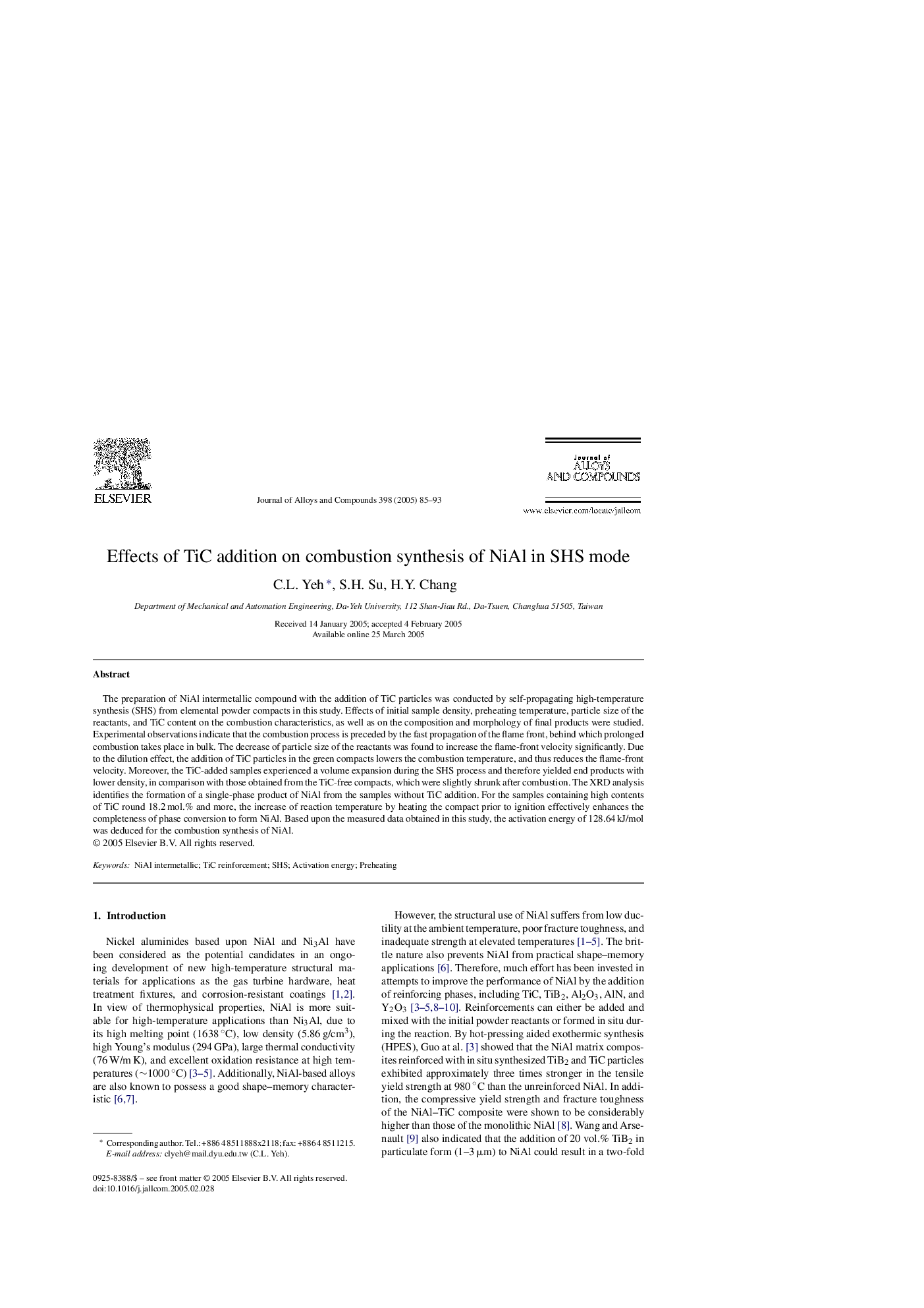| Article ID | Journal | Published Year | Pages | File Type |
|---|---|---|---|---|
| 9803545 | Journal of Alloys and Compounds | 2005 | 9 Pages |
Abstract
The preparation of NiAl intermetallic compound with the addition of TiC particles was conducted by self-propagating high-temperature synthesis (SHS) from elemental powder compacts in this study. Effects of initial sample density, preheating temperature, particle size of the reactants, and TiC content on the combustion characteristics, as well as on the composition and morphology of final products were studied. Experimental observations indicate that the combustion process is preceded by the fast propagation of the flame front, behind which prolonged combustion takes place in bulk. The decrease of particle size of the reactants was found to increase the flame-front velocity significantly. Due to the dilution effect, the addition of TiC particles in the green compacts lowers the combustion temperature, and thus reduces the flame-front velocity. Moreover, the TiC-added samples experienced a volume expansion during the SHS process and therefore yielded end products with lower density, in comparison with those obtained from the TiC-free compacts, which were slightly shrunk after combustion. The XRD analysis identifies the formation of a single-phase product of NiAl from the samples without TiC addition. For the samples containing high contents of TiC round 18.2Â mol.% and more, the increase of reaction temperature by heating the compact prior to ignition effectively enhances the completeness of phase conversion to form NiAl. Based upon the measured data obtained in this study, the activation energy of 128.64Â kJ/mol was deduced for the combustion synthesis of NiAl.
Related Topics
Physical Sciences and Engineering
Materials Science
Metals and Alloys
Authors
C.L. Yeh, S.H. Su, H.Y. Chang,
